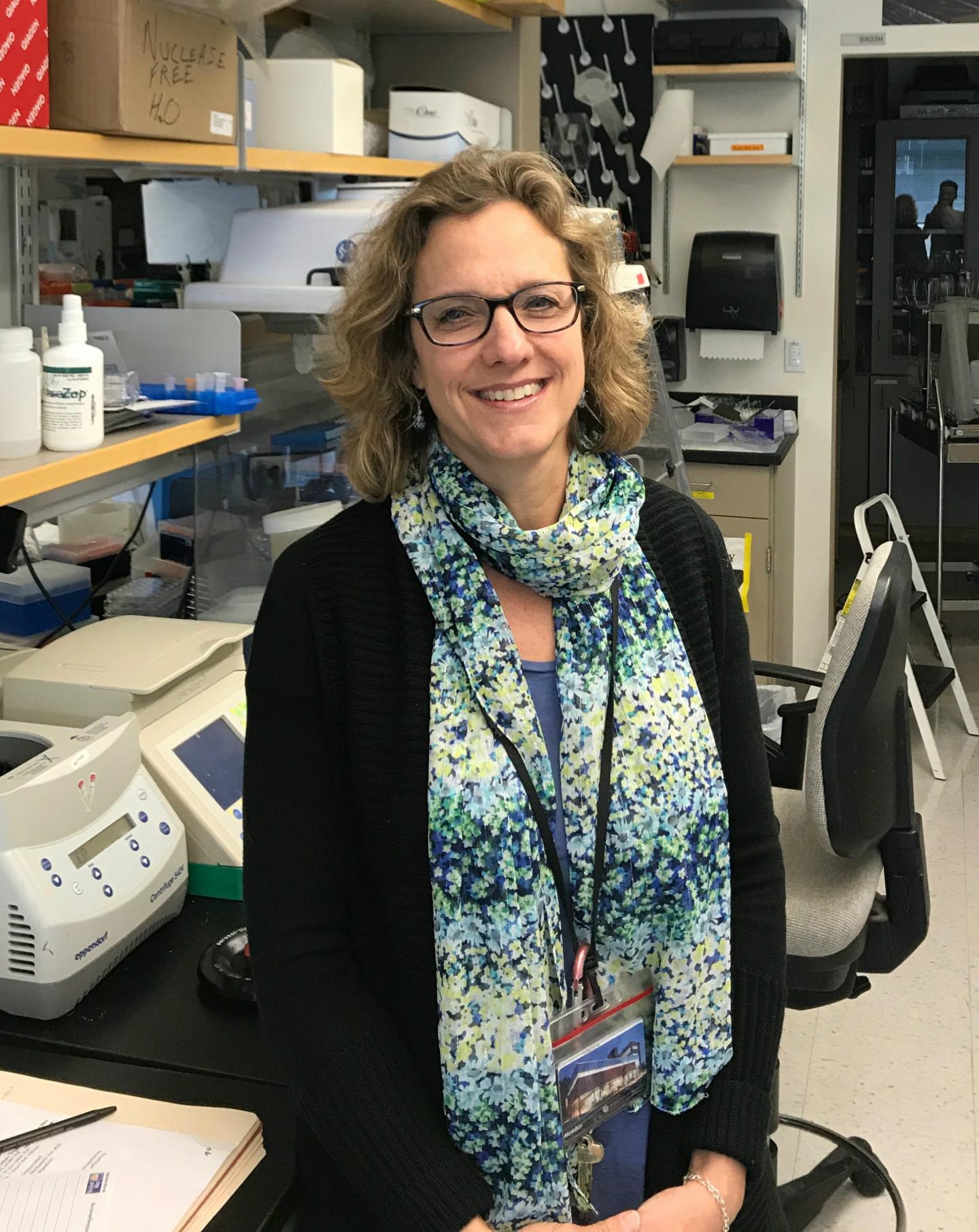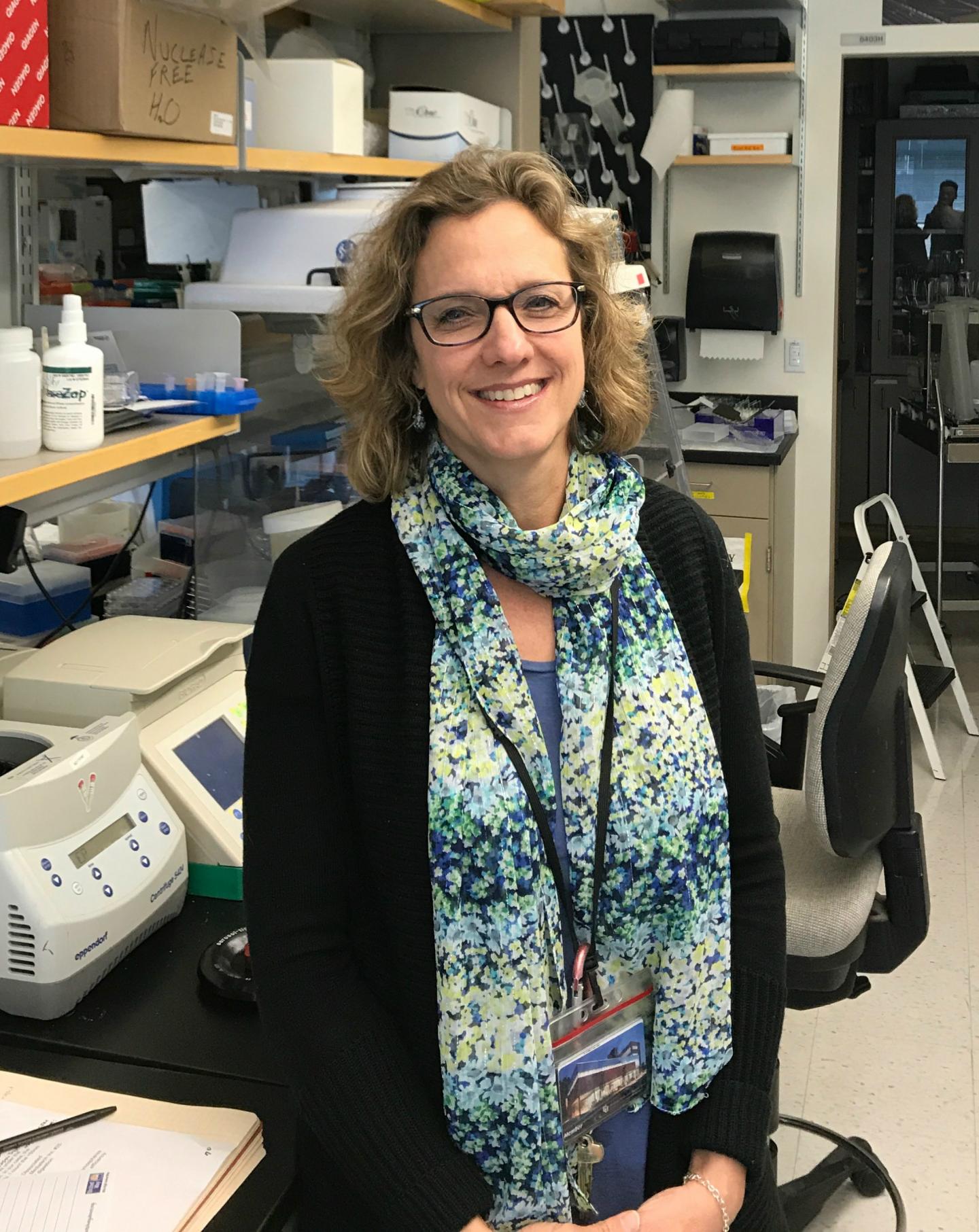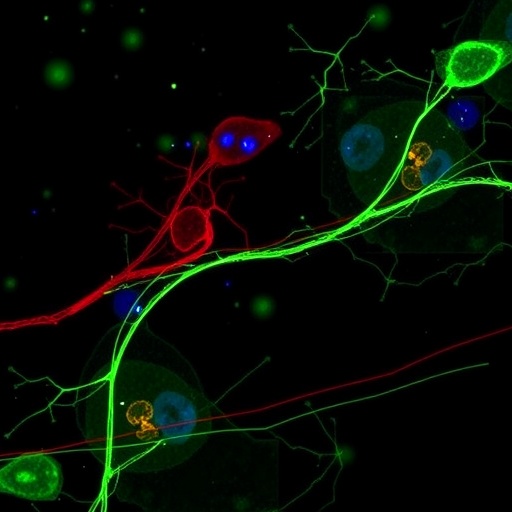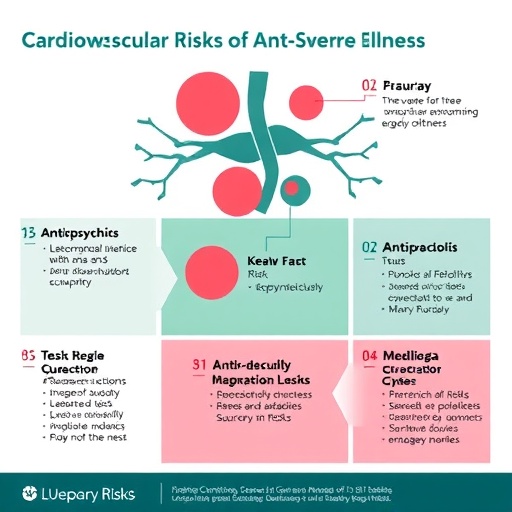
Credit: University of Colorado Cancer Center
A University of Colorado Cancer Center study published today in Nature Communications shows that metastatic breast cancer cells signal neighboring cells in ways that allow otherwise anchored cells to metastasize. The work pinpoints a promising link in the chain of signaling that, when broken, could reduce the metastatic potential of the disease.
The finding takes place in the context of an important debate in the field of research into breast cancer metastasis, namely whether breast cancer cells must undergo what is called epithelial-mesenchymal transition (EMT) in order to metastasize. In EMT, cells that have differentiated to become epithelial tissue (one of the four kinds of specialized tissue in the human body), lose this differentiation to regain characteristics and abilities of mesenchymal cells. One of these mesenchymal abilities is to survive detachment from anchor tissues to migrate freely to potential new sites of metastasis.
Early work showed that EMT is associated with metastasis. Subsequent work showed that individual cells do not, in fact, have to undergo EMT to metastasize (reducing interest in drug development aimed at stopping this transition). However, the current study shows that while individual cells may not have to undergo EMT to metastasize, these non-EMT cells may have to receive signals from cells that have undergone EMT transition, in a process the paper calls, "crosstalk between EMT and non-EMT cells that promotes dissemination."
The paper also pinpoints an important bottleneck for these signals that allow metastasis of otherwise anchored cells: EMT cells signal their non-EMT neighbors by activating the GLI transcription factor. When researchers used the GLI1/2 inhibitor GANT61 to treat models of the disease, non-EMT cells were once again restricted from metastasis.
"A tumor is not one thing. There is heterogeneity – many kinds of cancer cells acting in many different ways. What we show is that within a breast tumor, cells that have undergone EMT that makes them more aggressive and stem-like secrete molecules that affect the behaviors of surrounding cells, making these cells able to navigate the various steps of metastasis and seed new sites. Our work shows that in addition to these cells that have undergone EMT, it may be nearby cells influenced by those EMT cells that are able to metastasize," says Heide Ford, PhD, David F. and Margaret Turley Grohne Chair in Basic/Translational Cancer Research, Associate Director for Basic Research at the University of Colorado Cancer Center.
EMT is induced by a number of chemicals called transcription factors, which influence the expression of a cell's genes. Previous work in the Ford lab and elsewhere have shown these transcription factors that influence EMT to include Twist1, Snail1 and Six1. The Ford lab has shown that some cancer cells are able to up-regulate these transcription factors, thus increasing the rate of EMT. In the current study, the Ford lab, with first author Deepika Neelakantan, introduced EMT cells expressing these transcription factors to cultures of epithelial breast cancer cells not expressing these transcription factors.
"The addition of cells expressing Snail1 or Twist1 worked through Six1 to increase the migration and invasion of these otherwise more fixed epithelial breast cancer cells," Ford says. Importantly, even the addition of material in which EMT cells had been grown, but without the cells themselves, made cultures of epithelial breast cancer cells more invasive.
"It is not the presence of EMT cells per se that creates the invasive characteristics of epithelial cells," Ford says. "It is the presence of secreted factors created by EMT cells. Although clearly the presence of these EMT cells is the likely source of these secreted factors in tissue."
In other words, some "residue" of EMT cells was gifting the same metastatic potential to non-EMT cells.
The work also shows what this EMT "residue" was doing inside non-EMT, epithelial cells. It turned out that these secreted factors activated the much-studied "hedgehog" pathway in the epithelial cells, and that this activation was critical to increase the aggressiveness of the epithelial cells.
Again, some breast cancer cells learn to up-regulate transcription factors including Snail1 Twist1, and Six1 to promote EMT, thus gaining the ability to metastasize. Nearby epithelial cells recognize factors secreted by Snail1 and Twist1, again working through Six1, and thus also become able to metastasize. And this signaling takes place through the hedgehog pathway. For the Ford lab the question became where to intercede in the chain of hedgehog signaling to keep these transcription factors from initiating EMT.
This question, as well, exists in the context of an important debate. Hedgehog signaling has been shown to be important in many types of cancer. However, hedgehog inhibitors have been largely unsuccessful in clinical trials. Now with a more precise understanding of how transcription factors interface with the hedgehog pathway to promote EMT and eventually metastasis, the Ford lab hoped to discover exactly where in this chain of hedgehog signaling would be the best place to dam this flow of information.
"The conditions that lead to secretion of these factors are different in different contexts, but eventually it all goes through the main transcription factor that mediates hedgehog signaling, the Gli transcription factor," Ford says. "You can try to break this signaling chain at any point, but we show that breaking the chain at the top of the signaling pathway may not have much effect — EMT cells may still be able to influence epithelial cells through other channels that activate the pathway by targeting Gli in other ways. But because all of this signaling passes through Gli, downstream inhibitors could be efficacious in treating metastatic progression of breast cancer."
Results from this study suggest that the lack of efficacy in hedgehog inhibitors may be due to the pathway becoming activated through different means — targeting any single activation mechanism may not work, as other types of cancer cells within a heterogeneous population may be able to activate hedgehog in other ways. But downstream from these methods of activation, hedgehog signaling eventually depends on the Gli transcription factor. This study implies that inhibiting hedgehog signaling at the point of Gli transcription factor may help to stop EMT transition and reduce the metastatic potential of breast cancer.
###
Media Contact
Garth Sundem
[email protected]
@CUAnschutz
http://www.ucdenver.edu
Original Source
http://www.coloradocancerblogs.org/metastatic-breast-cancer-cells-use-hedgehog-evilize-docile-neighbors/ http://dx.doi.org/10.1038/ncomms15773





